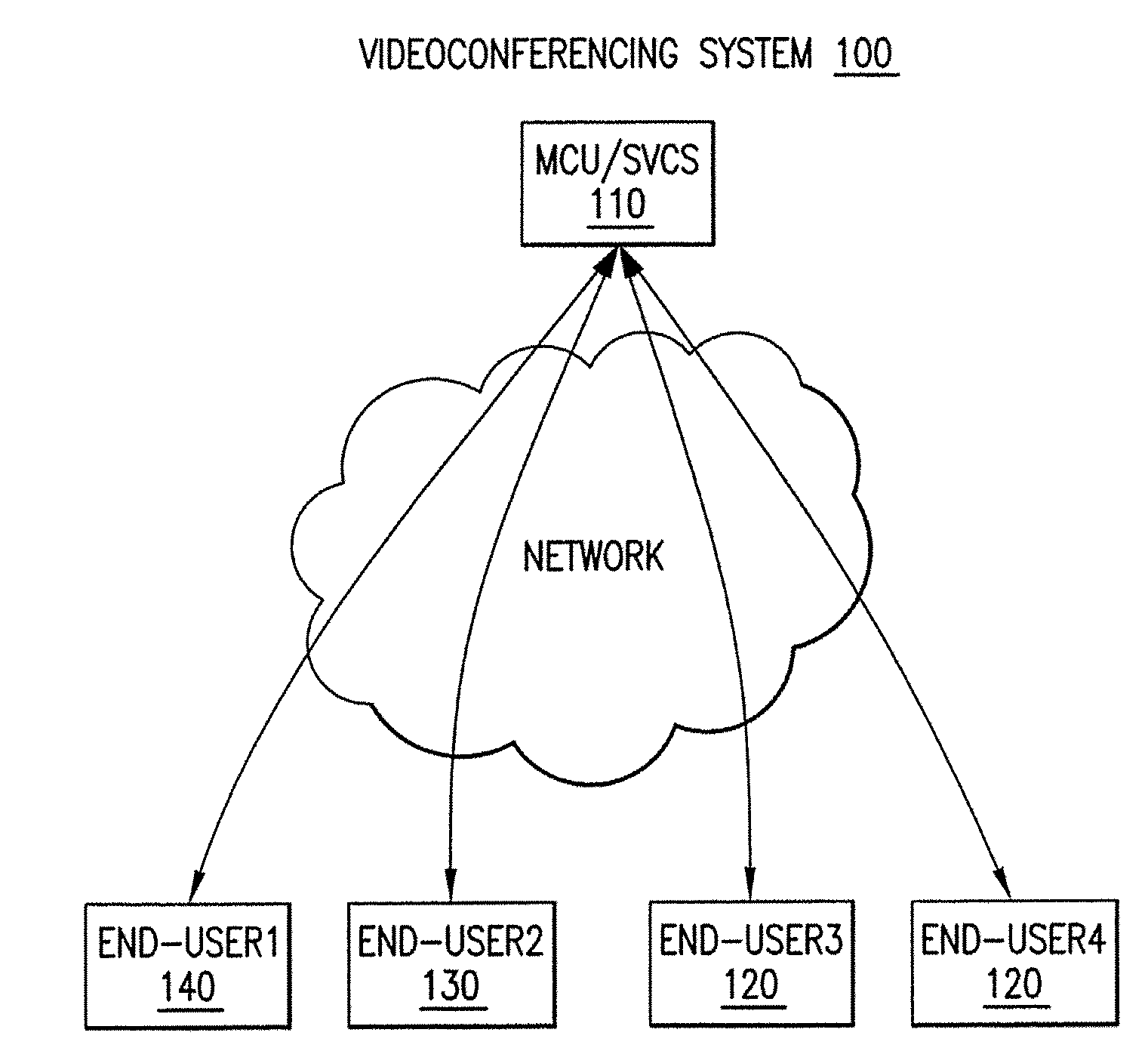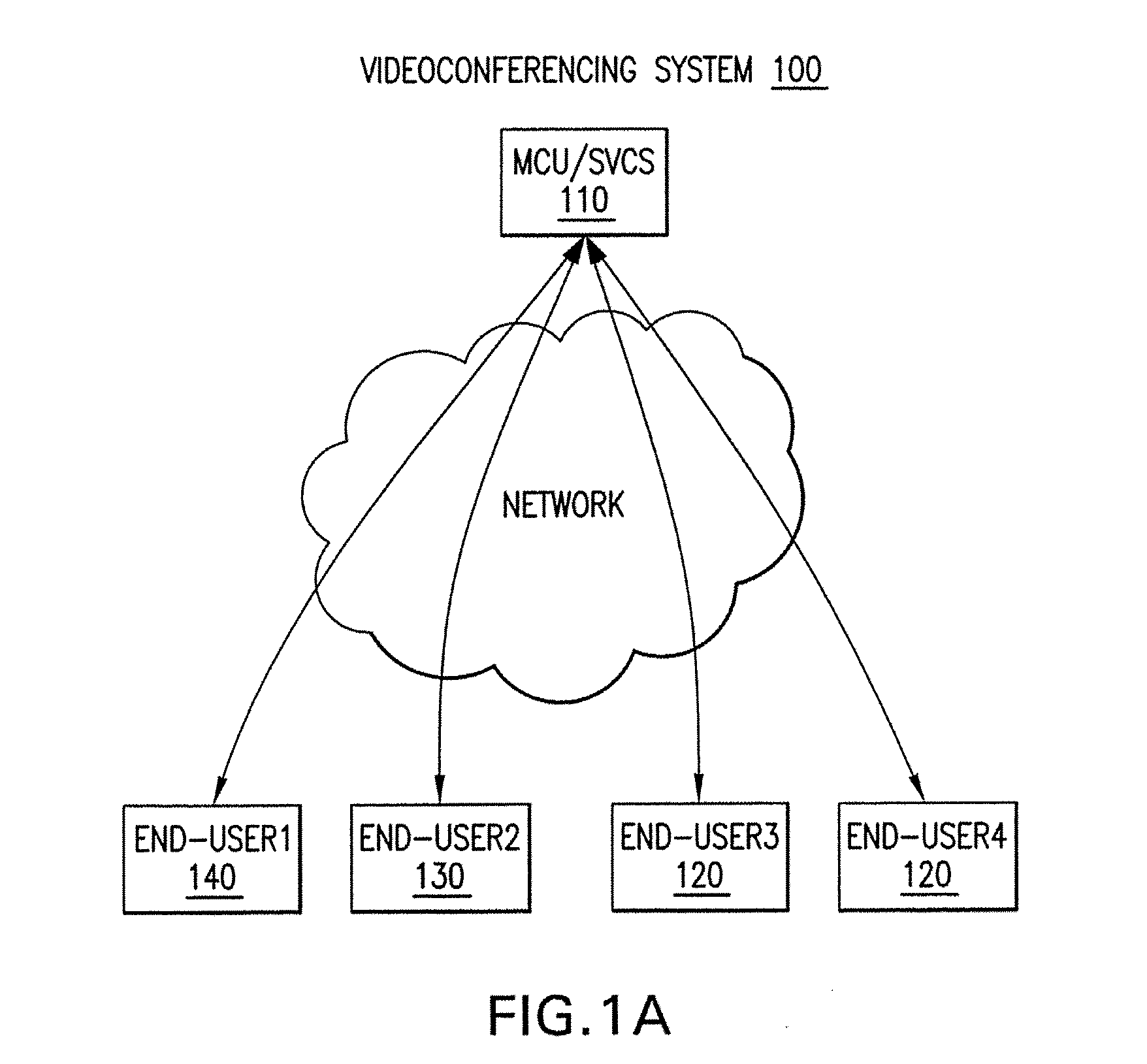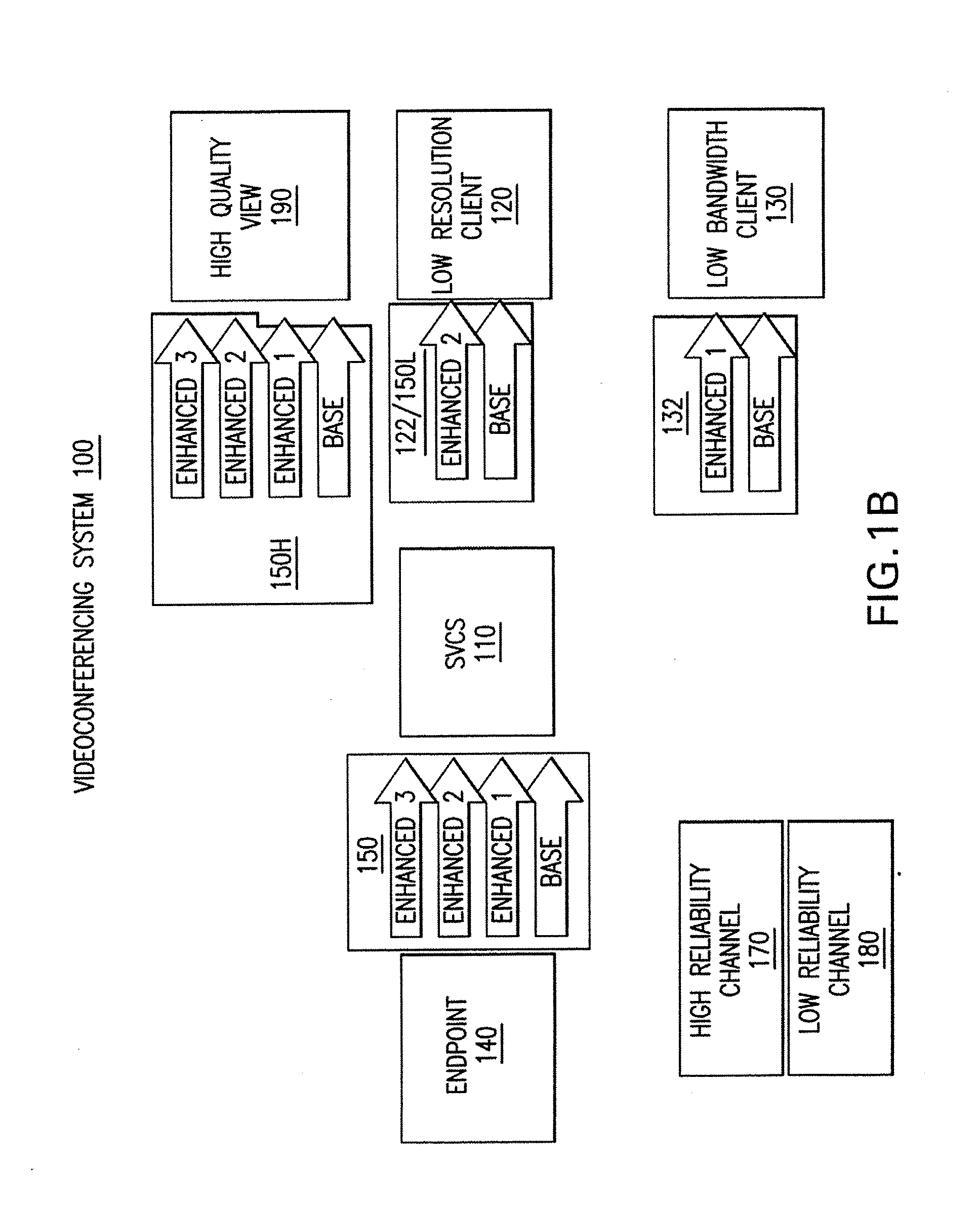System and method for scalable and low-delay videoconferencing using scalable video coding
a videoconferencing and video coding technology, applied in the field of multimedia and telecommunications technology, can solve the problems of total end-to-end delay in the given system, unnatural restraint of videoconferencing participants, and inability to readily provide customized videoconferencing functionality in conventional communication network systems, etc., and achieve the effect of reducing the error resilience of the stream
- Summary
- Abstract
- Description
- Claims
- Application Information
AI Technical Summary
Benefits of technology
Problems solved by technology
Method used
Image
Examples
Embodiment Construction
[0046]The present invention provides systems and techniques for scalable video coding (SVC) of video data signals for multipoint and point-to-point video conferencing applications. The SVC systems and techniques (collectively “solutions”) are designed to allow the tailoring or customization of delivered video data in response to different user participants / endpoints, network transmission capabilities, environments, or other requirements in a videoconference. The inventive SVC solutions provide compressed video data in a multi-layer format, which can be readily switched layer-by-layer between conferencing participants using convenient zero- or low-algorithmic delay switching mechanisms. Exemplary zero- or low-algorithmic delay switching mechanisms—Scalable Video Coding Servers (SVCS), are described in co-filed U.S. patent application Ser. No. ______[SVCS]______.
[0047]FIGS. 1A and 1B show exemplary videoconferencing system 100 arrangements based on the inventive SVC solutions. Videoco...
PUM
 Login to View More
Login to View More Abstract
Description
Claims
Application Information
 Login to View More
Login to View More - R&D
- Intellectual Property
- Life Sciences
- Materials
- Tech Scout
- Unparalleled Data Quality
- Higher Quality Content
- 60% Fewer Hallucinations
Browse by: Latest US Patents, China's latest patents, Technical Efficacy Thesaurus, Application Domain, Technology Topic, Popular Technical Reports.
© 2025 PatSnap. All rights reserved.Legal|Privacy policy|Modern Slavery Act Transparency Statement|Sitemap|About US| Contact US: help@patsnap.com



